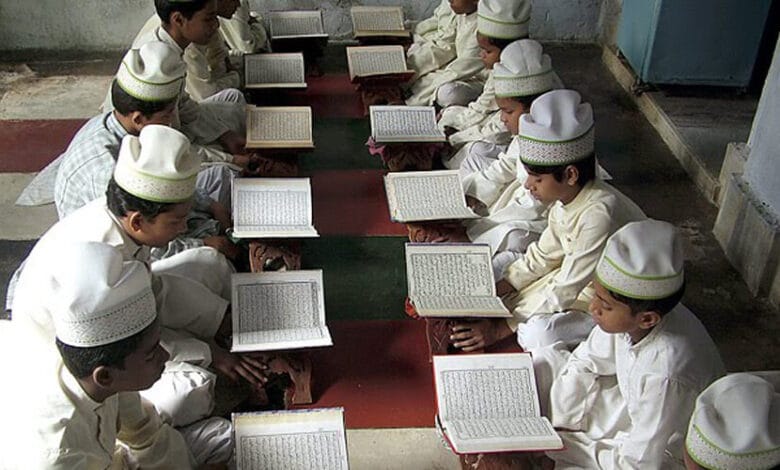Madrasas and Universal Learning: Taking forward the tradition to modern knowledge
The Arabic word ‘madrasa’ had a universal meaning; the name was given to any form of educational institution, secular or religious, and not just Islamic.

hen you hear the word ‘madrasa’ perhaps what flashes before your mind is the image of young skull capped boys reciting the Quran. The Arabic word ‘madrasa’ had a universal meaning; the name was given to any form of educational institution, secular or religious, and not just Islamic. It comes from the root ‘darasa’, meaning ‘he read repeatedly’ or ‘he studied.’ Madrasa literally translates to ‘a place where learning and studying takes place’.
The origins
Tracking the origins of madrasas takes us back to the 10th century in Khurasan, Transoxania and northern Iran. During the 10th and 12th centuries, madrasas instituted with libraries emerged in Khwarazm, Merv, Ghazna and Bukhara. In significant urban sites, classical spatial compositions were built where a somewhat unified architectural body was constructed with elements of mosque, madrasa and garmabs (public baths).
Even though the unsettling disturbance brought by the 13th century Mongol invasion extensively weakened these learning activities, madrasas managed to maintain their continuity in creativity and culture, expanding their reach to the eastern Caliphate. The Indian subcontinent too saw the formation of madrasas, one such example is a madrasa in Gwalior whose structure resembles that of a Buddhist vihara.
Major transitions occurred in these educational institutions, giving more importance to scientific as well as literary thought; they were soon regarded as universal educational centres, promoting intercultural exchange between diverse populations. Madrasas were providing a wide range of courses from theology to science, philosophy and philology, to history and literature and also music and lessons of adab, polite culture.
Scholars acknowledged the importance of secular science for a dynamic society. These ideas were challenged during medieval times, enforcing stern Islamic theological teachings. At the same time, madrasas in Herat and Samarkand carried on diverse cultural centres for astronomy, science and mathematics. In Herat, madrasas taught and specialised in medicine; Al-Razu and Ibn Sina, medical scholars of Islam, were given high status at European medical schools. In Baghdad, disciplines like pharmacy, natural sciences and medicine were taught in Mustansiriyya Madrasa, built by the Abbasid Caliph Mustansir in 1234.
Madrasas were not only places for education; they provided housing for mustshiqqs, students and the poor, to enable them to study. This remains true in contemporary times. There have been reports of girls outnumbering boys in some schools. The Moin-ul-Islam madrasa in Agra, an Islamic institute that believes co-education strengthens communal harmony is teaching Sanskrit and Arabic languages to students coming from both Hindu and Muslim communities.
Some tend to view madrasas as a highly rigid fanatic kind of Islamic institution, but let us not forget inclusive examples of personalities like Raja Ram Mohan Roy, Munshi Premchand and India’s first President Rajendra Prasad, who started their education in madrasas.
Universal learning
The interpretation of madrasas indeed remains universal; a place where learning takes place irrespective of the walls built and demolished. Madrasas have the potential to transcend concrete institutionalised spaces of education and the dichotomy of beliefs. All these educational initiatives take place on this very soil under one galactic roof, in the everyday life where we cultivate a continuous form of learning, creativity, imagination as well as education.




